After having pro sailor Tim Kroeger last time explaining general sailboat racing terms, strategies and tactics for beginners (read the article here) I want to dive deeper into this topic with this second article. “The Art of the Start” is meant to give you rookie crews a deeper insight into what another dedicated regatta sailor, Martin Menzner, thinks of what might be of interest when it comes to take off to your first race.
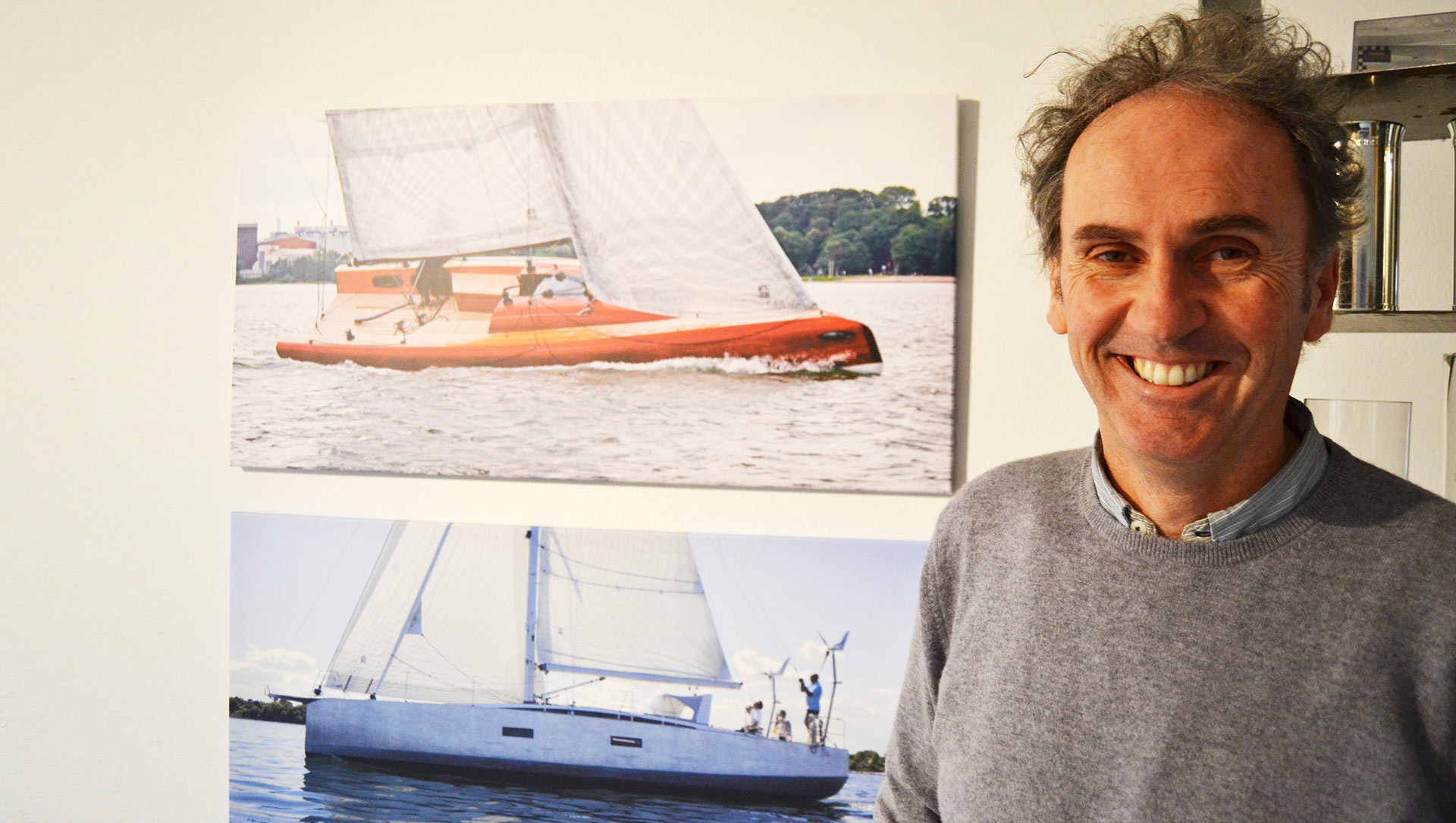
Martin Menzner is not just a passionate J80 and J22-sailor with years of experience in racing these fast boats on a world class level, he is also the designer of the renowned performance cruisers of Berckemeyer aluminium yachts (read here), bringing his whole experience and knowledge of what makes a yacht sailing as swift as possible to the starting line. Let´s see what he has to say about starting-techniques in a sailboat race.
“At season´s start we are usually down to … 50 per cent”
NO FRILLS SAILING.com | Lars Reisberg: “Martin, such a pleasure to meeting you here in your office, thanks for taking some of your precious time for this conversation. Today we won´t talk about your marvellous Berckemeyer-designs but about racing a yacht …”
Martin Menzner: “… oh dear, this will be fun. That´s because I am possibly the worst starter of them all.” (laughs)
NFS.com: “Well, I won´t agree here: After all you and your crew did earn multiple times a first place in German Open-regattas?”
Martin: “Well, yes. I´m just kidding. But anyway, there´s a bit truth in it. Compared to, let´s say the Spanish crews which are world class in J-sailing, we, the German crews really have a handicap when it comes to training. We have to stop sometime around autumn because of the bad weather here in the Baltic Sea, the Spanish can sail all year long. So, I am really not joking – we are down to 50 per cent when we bring back our boats to the water in spring. And that means that our starting capabilities have to be refreshed and re-gained each year over again.”
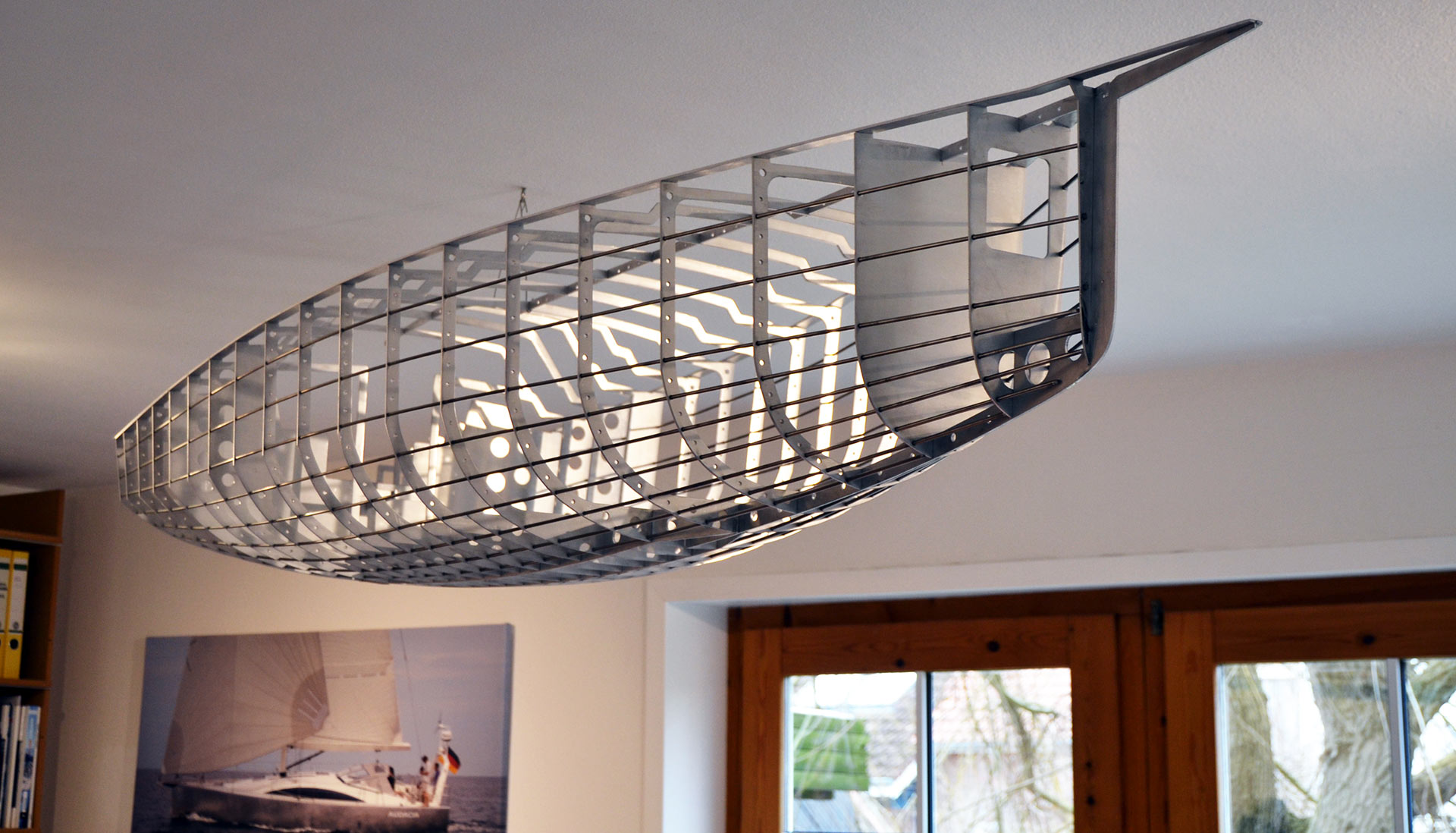
NFS.com: “What does this mean in relation to the start-process in a race?”
Martin: “Well, the theory is there, of course, but we have to develop the feeling for the boat, for the trim, for the race over again. We have to get into it again and then we get better and better with each race. I feel, fresh on the boat in a new season again, that my feeling for the boat has suffered over winter, I have to practice a lot in order to get everything back again and – most important – to re-gain the automatic reactions.”
NFS.com: “What´s your position on your J-boat?”
Martin: “I am the tactician, helmsman and main sail trimmer. Anyway, don´t take it too seriously – we are “old salts” on the boat and what we lack in practice we can make up with experience. Well, mostly …”
“Having a concept for the start is the main thing.”
NFS.com: “So, let´s talk about the start of a sailboat race.”
Martin: “Yes, let´s go. So, you see, at first it is important to know that most races are started upwind. That´s because I assume that this is safer for the nervous pack than starting downwind. Anyway, there are races which may be started in another fashion, like the Amarica´s Cup that is started in a beam reach position or last Silverrudder that was done downwind. Anyway, mostly it´s upwind.”
NFS.com: “You said that the concept of the start is the main thing?”
Martin: “Yes. From my point of view, a good starter is one who knows what he wants to do and when and where he wants to pull it off. The task is to find answers to these three questions.”
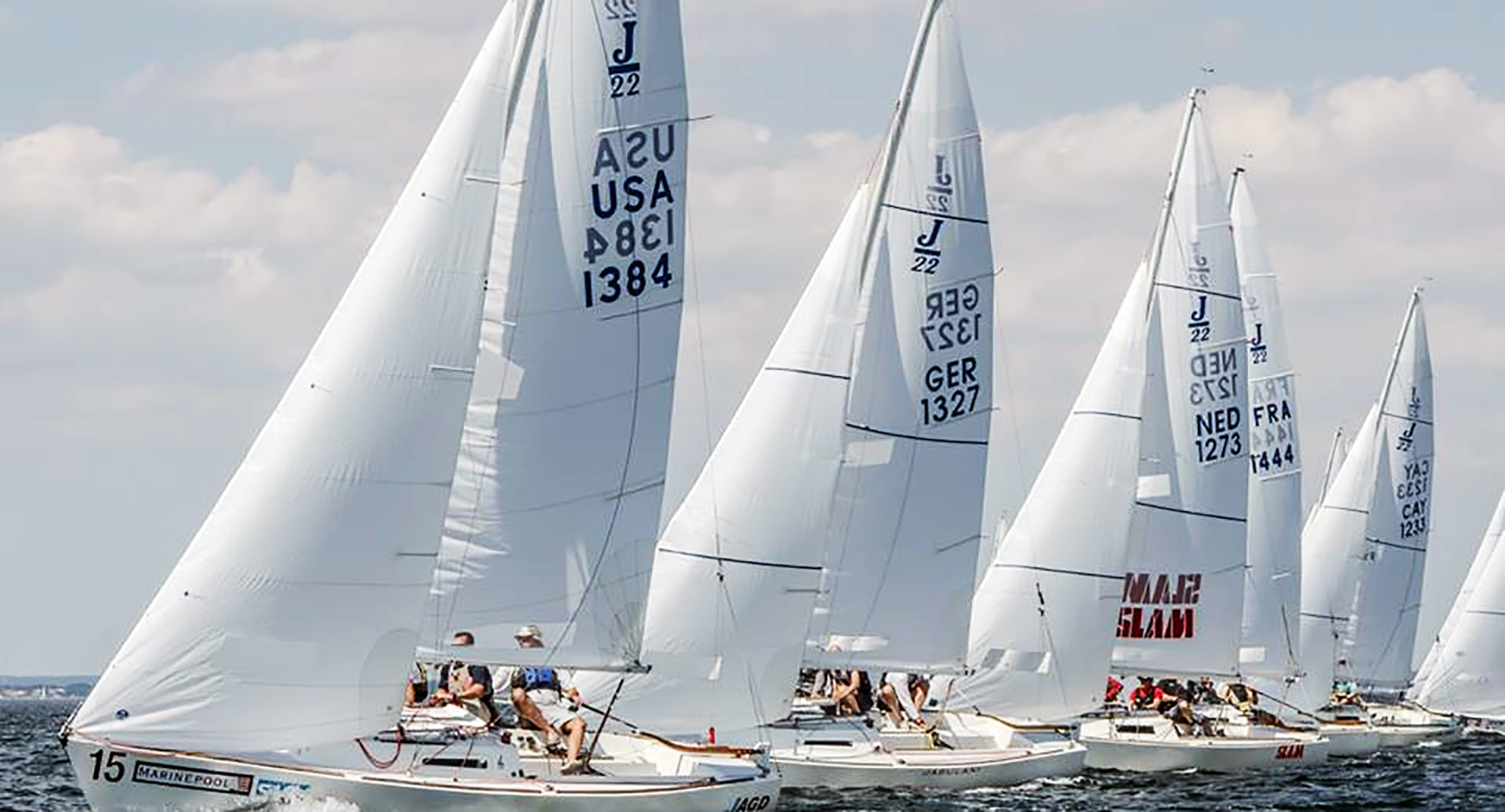
NFS.com: “Can you dive deeper into this?”
Martin: “Of course. First of all the biggest question right before a start is: Where is the starting line …?”
NFS.com: “… wait: Isn´t this clear? I mean, where the starting line really is? I thought the course is fixed?”
Martin: “Well, not quite so and not every time. It´s determined by windward and leeward buoys or other waypoints – which can also be relocated during the race when wind shifts. Even the very starting line isn´t fixed. You see, a starting line consists of two points: The boat, mostly at anchor, with the race director and some judges aboard, and the so called “pin end”. This is a smaller buoy, mostly equipped with a pennant. This pin end will be placed on its position until shortly before the start, maybe by a smaller rib. The race director can change its position until, I think, four minutes before the start.”
NFS.com: “Why would he do this?”
Martin: “Well, by shifting the pin end more to windward, the starting boats will changer their starting patterns to go over the line more to the pin. By shifting it to leeward the race committee can draw the pack more to the starting boat. In this, the race director can influence how and where the field will pull off their starting procedures. It´s a safety precaution.”
NFS.com: “But that would mean that a regatta-crew will have to be able to change the plan for the start until shortly before the race is on?!”
Martin: “Yes. That´s true. Here´s how I do it: Until few minutes before the start-signal, we are beginning at the starting boat and are sailing slowly all along the starting line up until we reach the pin end. In this, we travel all along the whole length of the starting line …”
NFS.com: “… by the way, how long is a starting line?”
Martin: “That depends. Mostly it´s the sum of the lengths of all participating boats. So, sometimes in German Open regattas in the J80-class we have some 25 boats, on World Championships even more, like 60 to 80 boats: That´s a starting line of 500, 600 metres! And by this you see that there may be different conditions in terms of wind patterns, currents, waves and stuff present at the starting line. We look for these differences and try to decide where it´s best to start.”
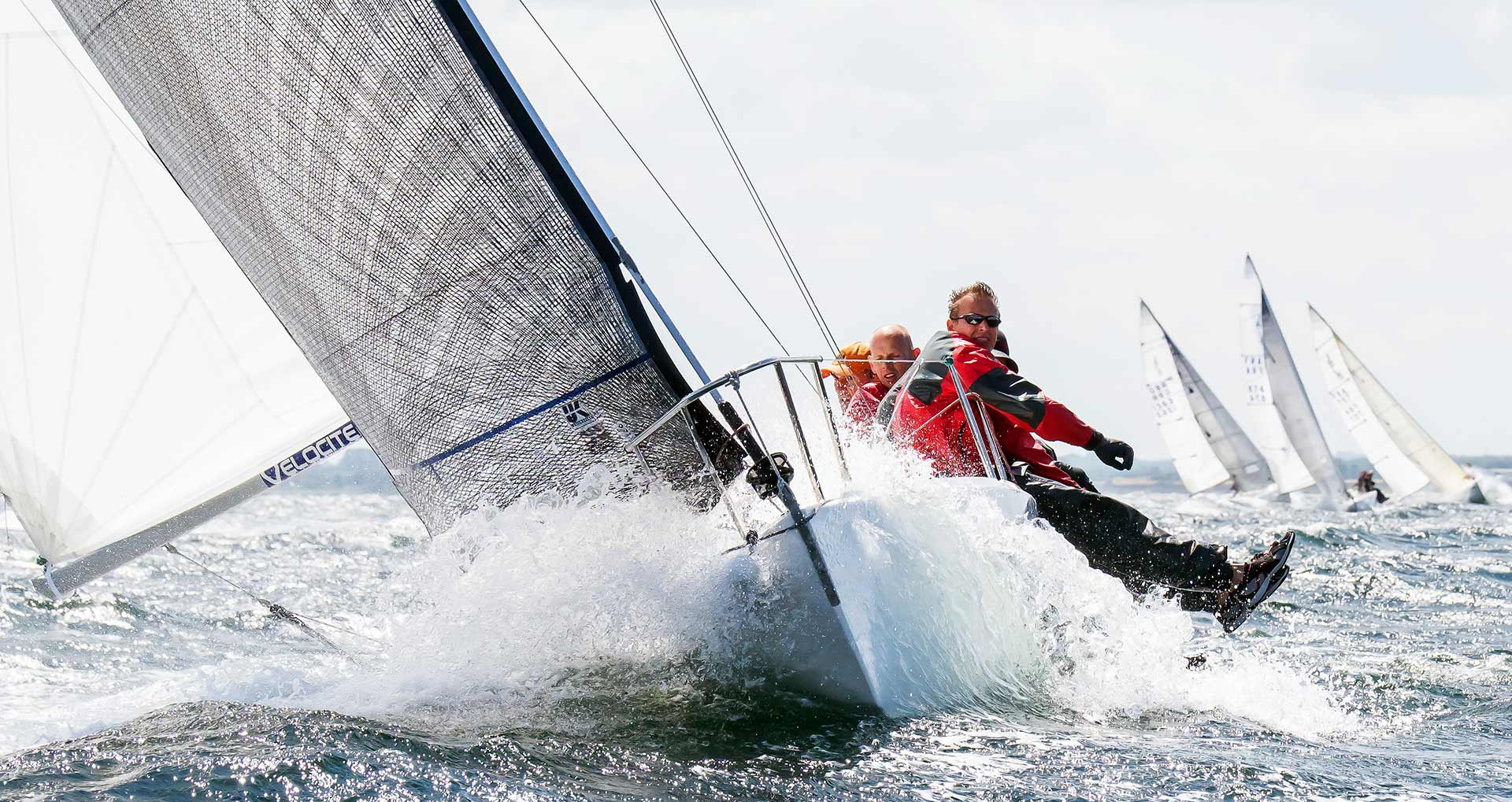
NFS.com: “I would assume, if the pin end is placed to windward, it´s there where´s the best place to pull off a start?”
Martin: “Normally I would agree. On the other hand, especially for beginners, starting more to the starting boat may be safer because there´s less trouble and infighting going on. It´s a way to minimize risks, especially during the hassle of the start. So, first question to be answered: Where is the starting line positioned and where is the best place to start?”
NFS.com: “What are the other factors?”
Martin: “As I said, the race director can change the position of the pin end until 3 or 4 minutes to the start. Have a clear plan: Where do I want to start? Then get there and place your boat on the position where you want to start the race. Of course, you need a Plan B, an exit-strategy. When something happens, conditions change or opponents blocking you, don´t begin to think of something new – have another plan in your pocket to pull it off immediately without losing too much time.”
NFS.com: “But if everybody acts this way, you need to be able to react instantaneously …”
Martin: “Yeah, this is where experience kicks in. You see, this is why I like sailing: Even old geezers like me can be successful – because of our experience.”
“Most of the time the conservative sailors are the successful sailors.”
NFS.com: “Which factors are influencing the decision of the tactician aboard a sailing boat before and during the starting process?”
Martin: “As I pointed out before, from my experience I would state that most of the times the sailors and crews acting in a conservative, preserving way are the ones which mostly prevail and are successful. You orientate yourself on what the majority of the field is doing, maybe you stick to boats which are sailing a good style and never let go of them. Try and wait for their mistakes and draw a benefit from their errors.”
NFS.com: “Minimizing risk.”
Martin: “Exactly. Well, speaking of myself, it´s not the way I sail. I am not sticking to the pack. I would say I am something between a virtuoso and a slob. I often do crazy things or maybe try to see a way where other won´t look for one. In any case, the problem is that often the choice between two ways of reacting isn´t 10:90. It´s more like 45:55 or 40:60. This is where the fun begins …”
NFS.com: “Why?”
Martin: “Because in order to be able to be successful it is absolutely essential to controlling your boat without thinking. You see, if you have to think of how you tack, or gybe or how to trim your boat, you´re lost. This is something, I mean, controlling the boat, is something you and your crew need to be able to do without thinking because then you can concentrate more on bringing up solutions for tactical problems of the race itself. Being creative, being spontaneous.”
“Controlling the field is unbelievably … nice.”
NFS.com: “So, Martin, tell me, is there a perfect position for pulling of the perfect start?”
Martin: “Yes, of course: No matter where actually the best place for going over the starting line may be, if you are able to execute a perfect tome-distance manoeuvre you have won half the battle! If you can do this just neatly, in most cases, you will be in a perfect position to fight for the front positions in a race.”
NFS.com: “Time-distance …”
Martin: “… is nothing else than going over the starting line right at the starting signal at full boat speed. We call it a “zero-start with maximum velocity”. Right when the countdown is at “zero” you are on the line and reaching top speed. If you – on top of it – now have enough room to leeward you can easily and at any time luff and control the field or opponents. That´s the perfect thing.”
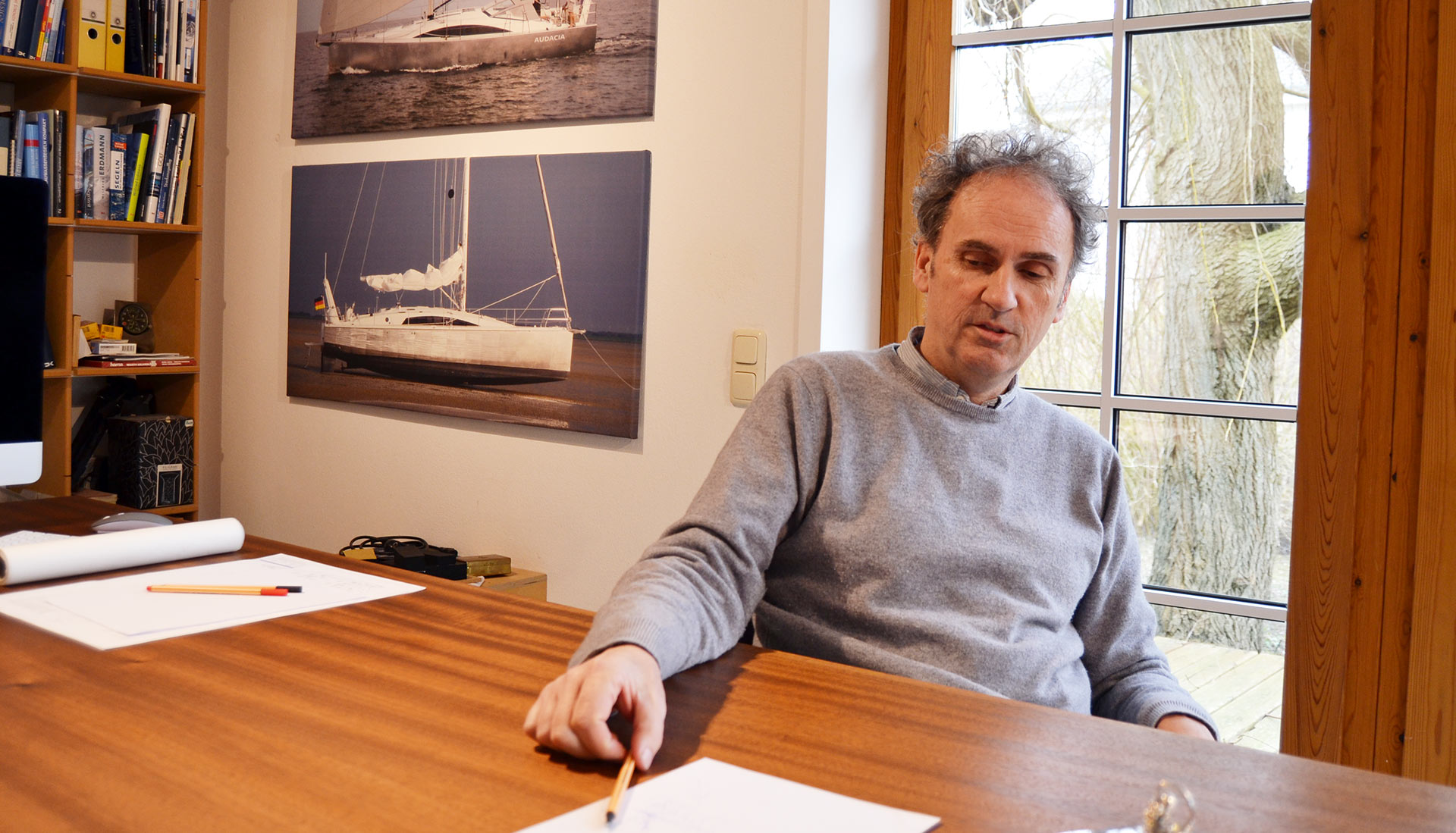
NFS.com: “So in any case this would mean that a start near the pin end is preferable?”
Martin: “Yes, this is also my preferred starting point – assumed that pin end is placed to windward and all the other factors are right. You see, this is only happening … in a laboratory. It´s a theorem. It won´t work always. And because of this, you need experience, lots of experience.”
NFS.com: “And you need to be able to control your boat?”
Martin: “Exactly. Because if you may have to care for manoeuvres and how to sail your yacht you simply cannot focus on strategy and tactics. You see, on our J80 “PIKE” we are a trained and skilled crew. We have a mutual understanding for each other and for the boat – without having to actively communicate. It´s like a modular system: If we like to go fast, we go fast because we instantly know what to do. If we like to go upwind and fast, we just do it.”
“Tactical sailing is the most fun”
NFS.com: “To sum it up here: Rookie crews should practice a lot of boat handling, manoeuvres and controlling the sheets at first. Second would be intensive training of time-distance-sailing.”
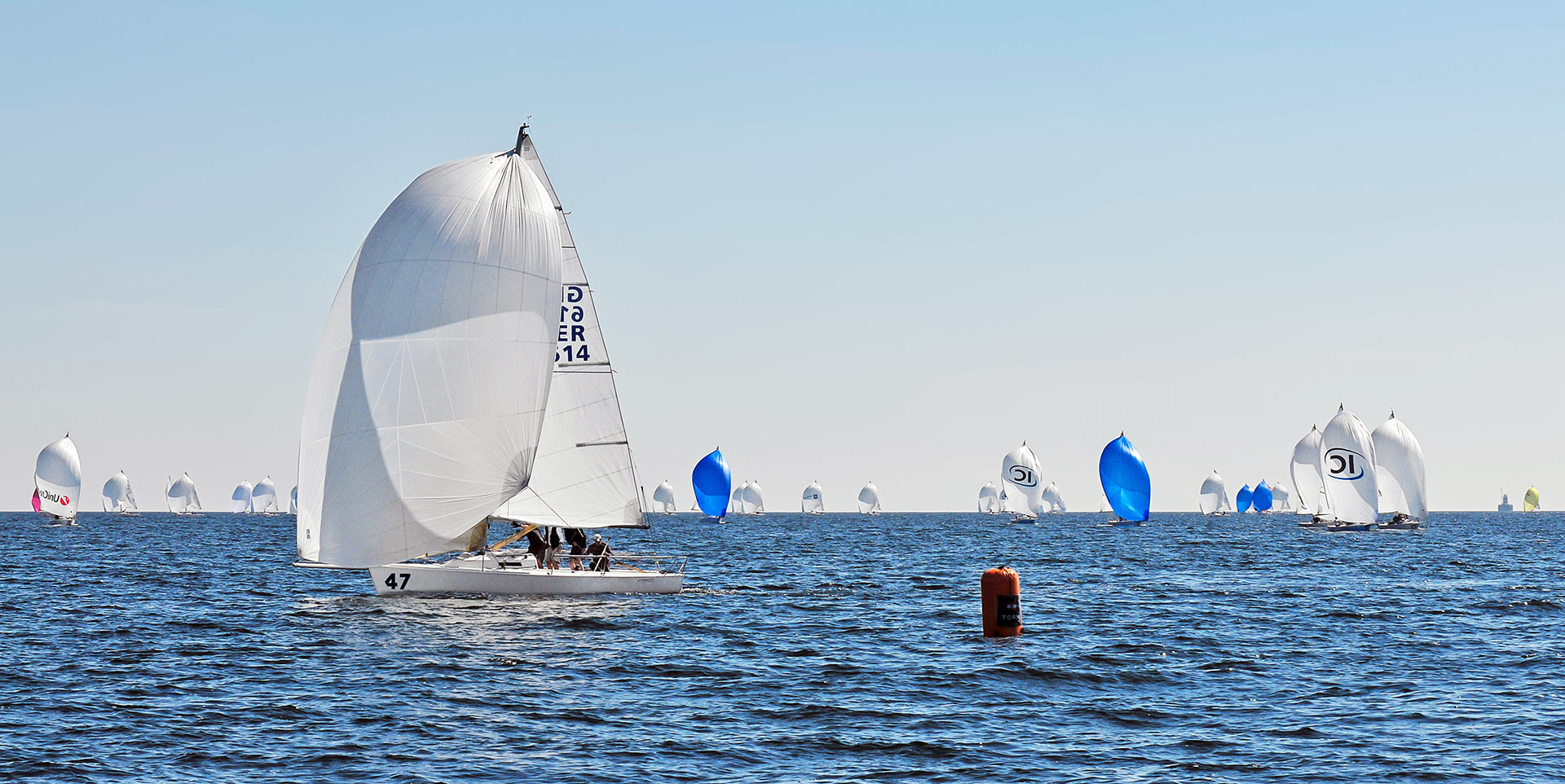
Martin: “Yes, agreed. If you are nearing perfection in this area, you can more focus on tactical sailing because this is where the most fun – for me personally – in regatta racing is. It´s the creative reaction to the everchanging patterns of the sea, the waves and the wind. Reacting to tactical situations, not fighting with your own boat.”
“You mean something like … the Menzner-Manoeuvre?”
NFS.com: “Martin, you are very successful in J80 and J22 regatta sailing. What was your best start you ever pulled off?”
Martin: “Ah I see, you mean something like the “Menzner-Manoeuvre”, right? Well, that was, I think, back at the J80 World Championships off Copenhagen/Denmark. At the starting line there had been no less than four Spanish boats – of which you have to know that they are the world elite in J80-sailing. At this very day the whole field knew that starting far off at the pin end would be best. But the Spanish already had positioned themselves next to each other at the best position. Their sails off in the wind, sitting at the very start line ready to luff and jump to high speed at any time.”
NFS.com: “Not the best situation …”
Martin: “No, not treally. But I tried something Hara-kiri here: As the pin end on this race wasn´t in fact a buoy but a rib with a pennant flying, I saw a small gap: The rib was at anchor with a long anchor-line dragging. So the Spanish kept one or two boat lengths distance from the rib as a safety-measure – there was a good chance to get caught by the anchor line if sailed by too close. But that was exactly what I did: I went full speed at beam reach right behind the Spanish´s sterns. I think they must have thought I´m crazy …”
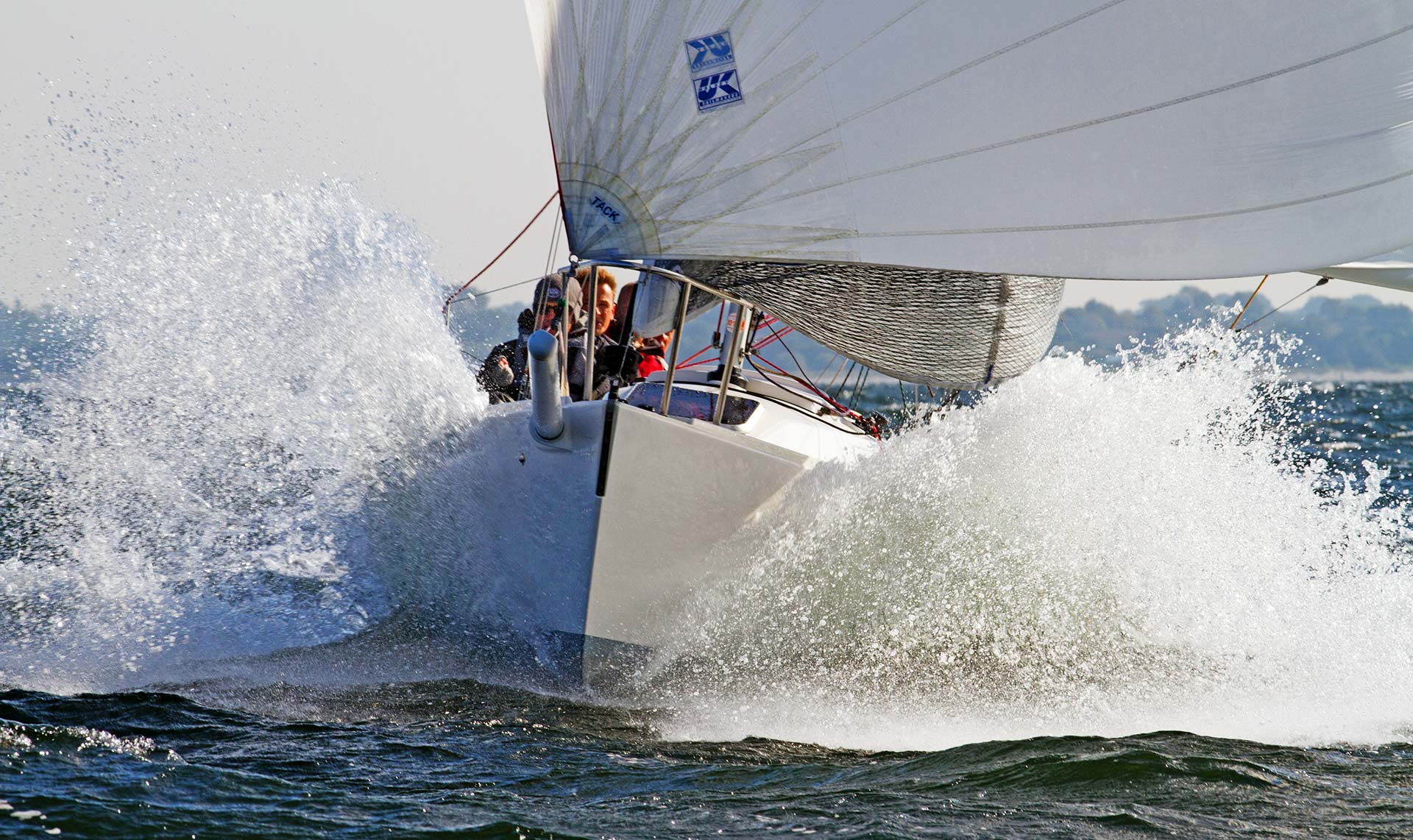
NFS.com: “… definitely!”
Martin: “I flew by and luffed some seconds before starting signal … and we dashed right by the Spanish boats at full speed squeezing ourselves between the pin-end rib and them. Of course, we didn´t catched their anchor line. Right after clearing the rib I beared away a bit to gain even more speed and guess what – we were ahead of the whole fleet, and most important, of the Spanish Armada by several boat lengths!”
NFS.com: “You made it to be World Champion?”
Martin: (laughs again) “No, not at all. Next day during the other races everything changed again. But at least we have been World Champions for this one first day of the event. What it teaches is that sometimes you make everything right and all turns out just well. And sometimes … not.”
“The three big no-go of starting a sailboat race.”
NFS.com: “Martin, what are from your point of view the most common mishaps for rookie crews in starting a race?”
Martin: “Well, assuming that boat handling is no problem, I would say, the first big thing is to start too early. Jumping the gun is not cool because you will receive a penalty and mostly that is it, you will see the pack just from behind for the rest of the race. Jumping the gun under Black flag is even more of a shame …”
NFS.com: “What does the Black flag mean?”
Martin: “Well, Black flag is raised by the race committee when the field is too nervous and the race director wants to calm down the crews. Black flag signal means that any misdemeanour will result in immediate disqualification – so no penalty but the end of this day´s racing. Starting early will thus also result in ending the race. So, jumping the gun is the big no-go.”
NFS.com: “And the other two?”
Martin: “Well, messing up time-distance to the starting line of course. That´s the second. As I mentioned earlier, if you hit the line at zero with maximum boat speed that´s the best you can do – but also a good portion for messing up a whole race. And last but not least, third big failure is the wrong side of the starting line. If you happen to choose the wrong side there is seldom a chance to catching up with the fast guys.”

NFS.com: “Speaking of the fast guys, what about deceit?”
Martin: “Well, of course, dragging other boats into believing that you do something you are actually not doing but provoking actions you might exploit is the normal tools of the trade in boat racing.”
NFS.com: “For example?”
Martin: “Well, for example a fake tack or as we call it: Under-tacking. People like to pull this off when they are blocked to windward by another boat and cannot move freely. So you appear to do a tacking manoeuvre, hoping that the other boat will also tack to remain in the position for blocking you – when they tack, you stop the manoeuvre, luff and pass by. But this seldom works – anyway, sometimes it does.”
NFS.com: “Any more manoeuvres?”
Martin: “… not any I´d like to talk about …” (laughs)
“To sum it up: Get practice. Get Experience!”
NFS.com: “Martin, this was very interesting, thanks. I did learn a lot about starting procedure and tactical sailing during these early chapters of a boat race.”
Martin: “Yes, it´s the most fun and very, very exciting! As I mentioned before, when a crew is able to blindfolded handling their boat and can control the boat at any given circumstances then they can focus on the strategy and the tactics of a race. They can read situations, make their plans and execute them. For this, it needs a lot of experience. And to gain experience, it takes a lot of practicing of course.”
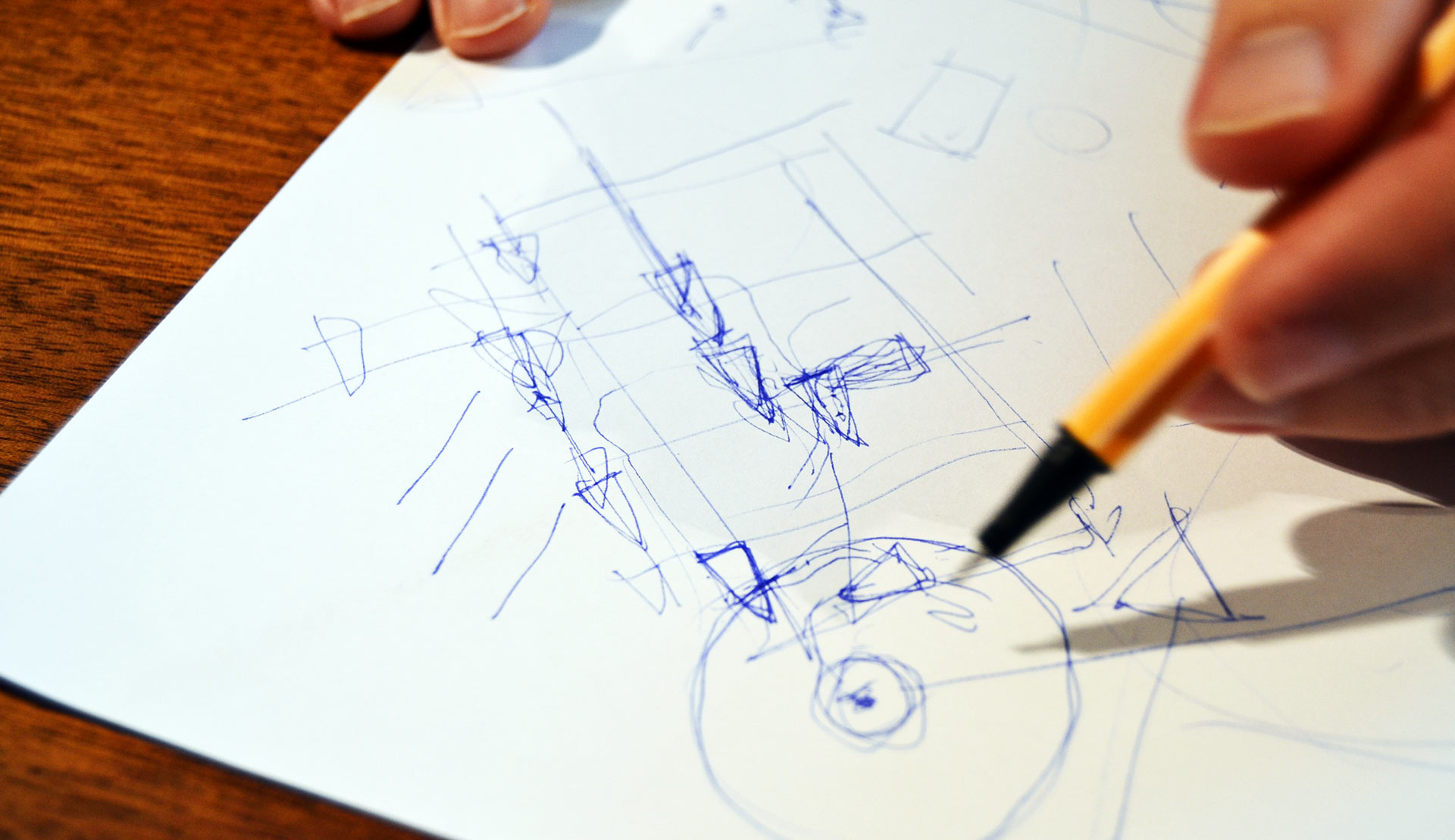
Thanking Mr. Menzner, who welcomed me to his Berckemeyer Yachts Design-office near the City of Kiel – Germany´s traditional epicentre of sailing – was very exciting for sure. Martin has studied product design which makes his Berckemeyer Yachts so beautiful and is also a skilled naval architect. His experience in fast racing the J-boats is the perfect groundwork to designing swift boats that look stunningly beautiful. Stay tuned for the third and last article on sailboat racing: Part 3, the Race!
Pictures by Lars Reisberg, sailboat racing pictures with kind permission by Martin Menzner
As well interesting to read – articles on Sailboat Racing:
Sailing Yacht Racing for Newbies: Tim Kroeger on regatta-racing
Training to single-hand racing an IMOCA 60 yacht
My first time sailing a Pogo 40 racing yacht
